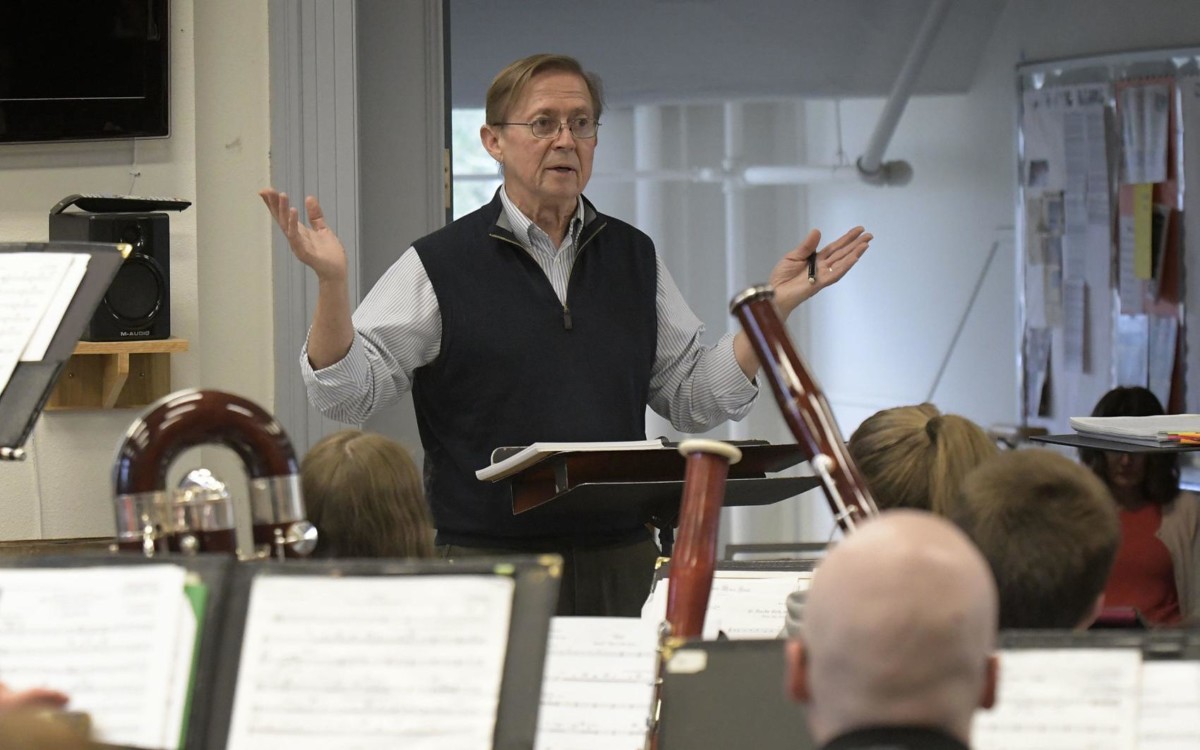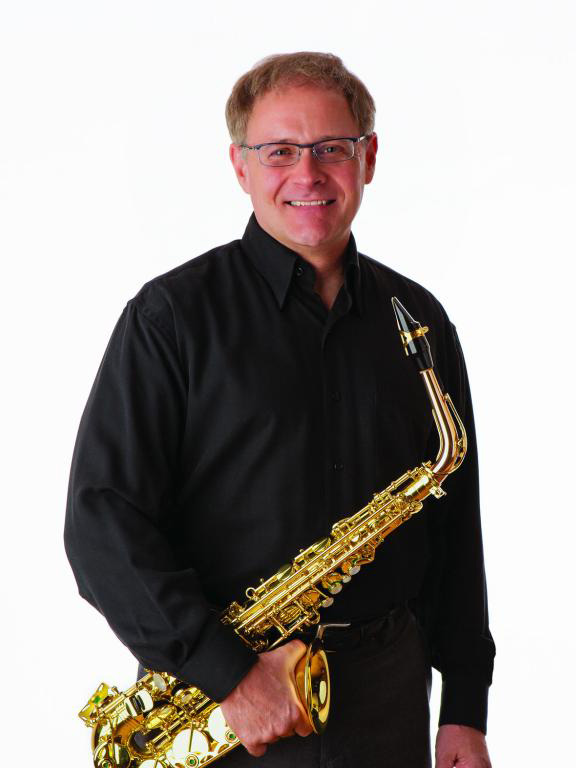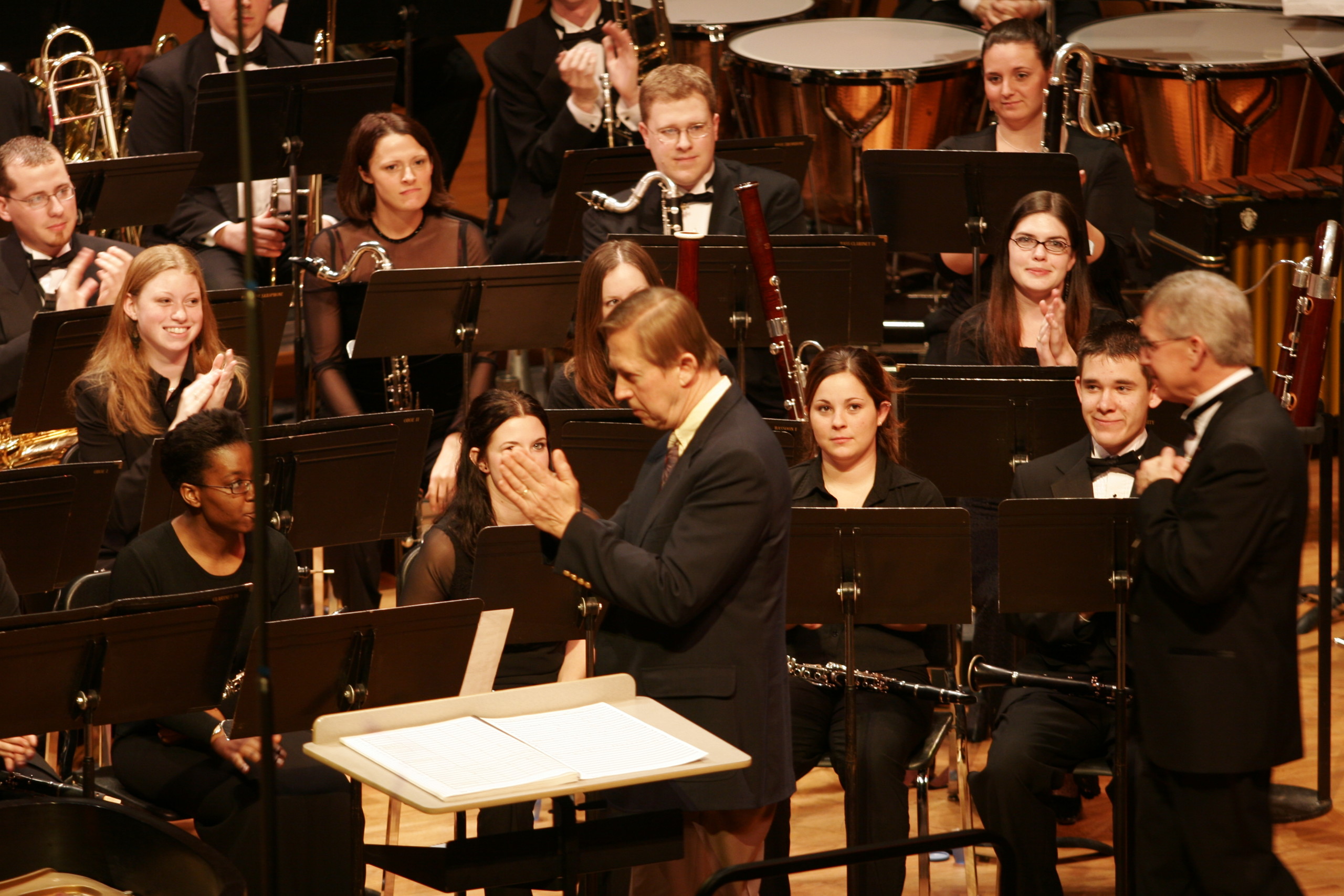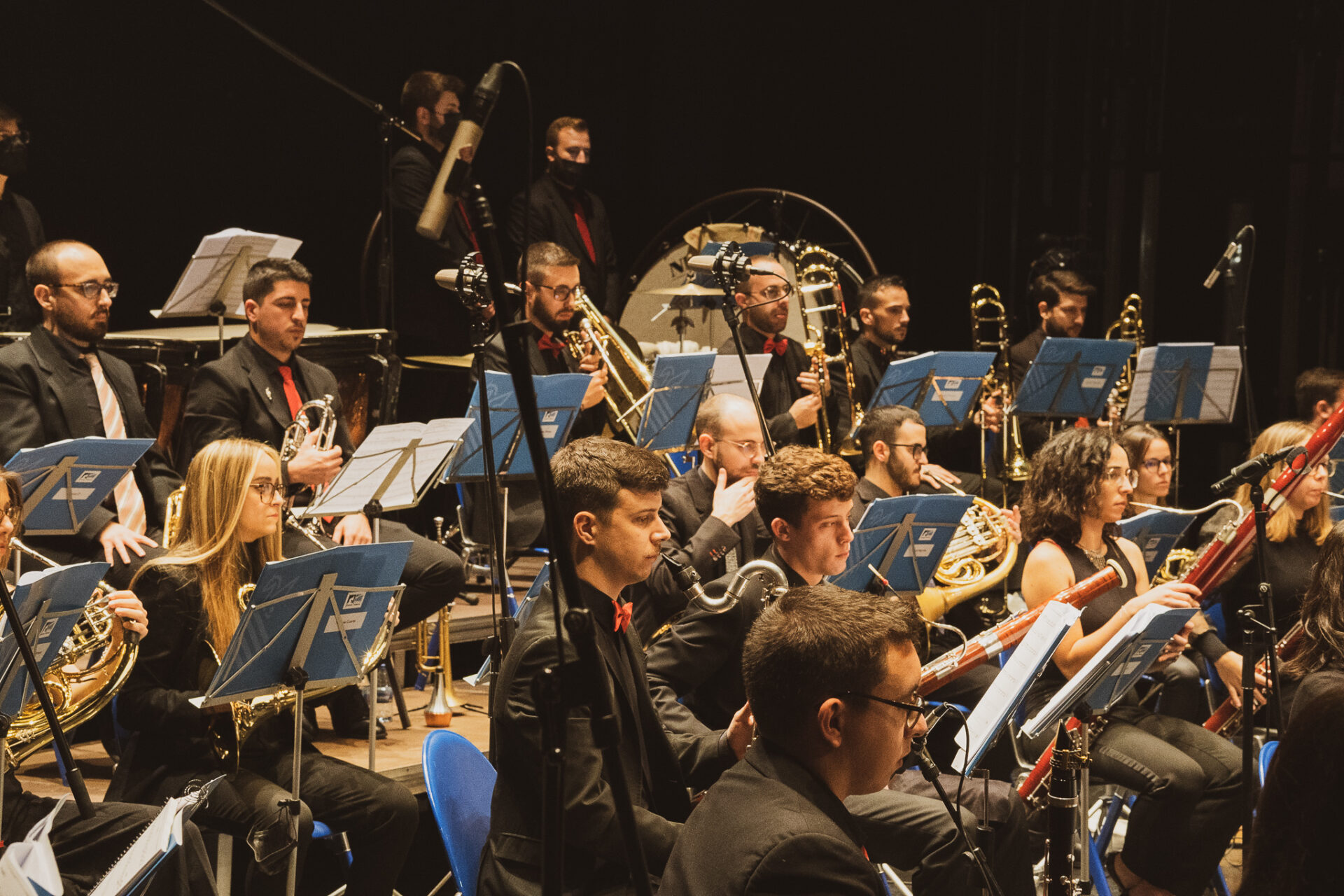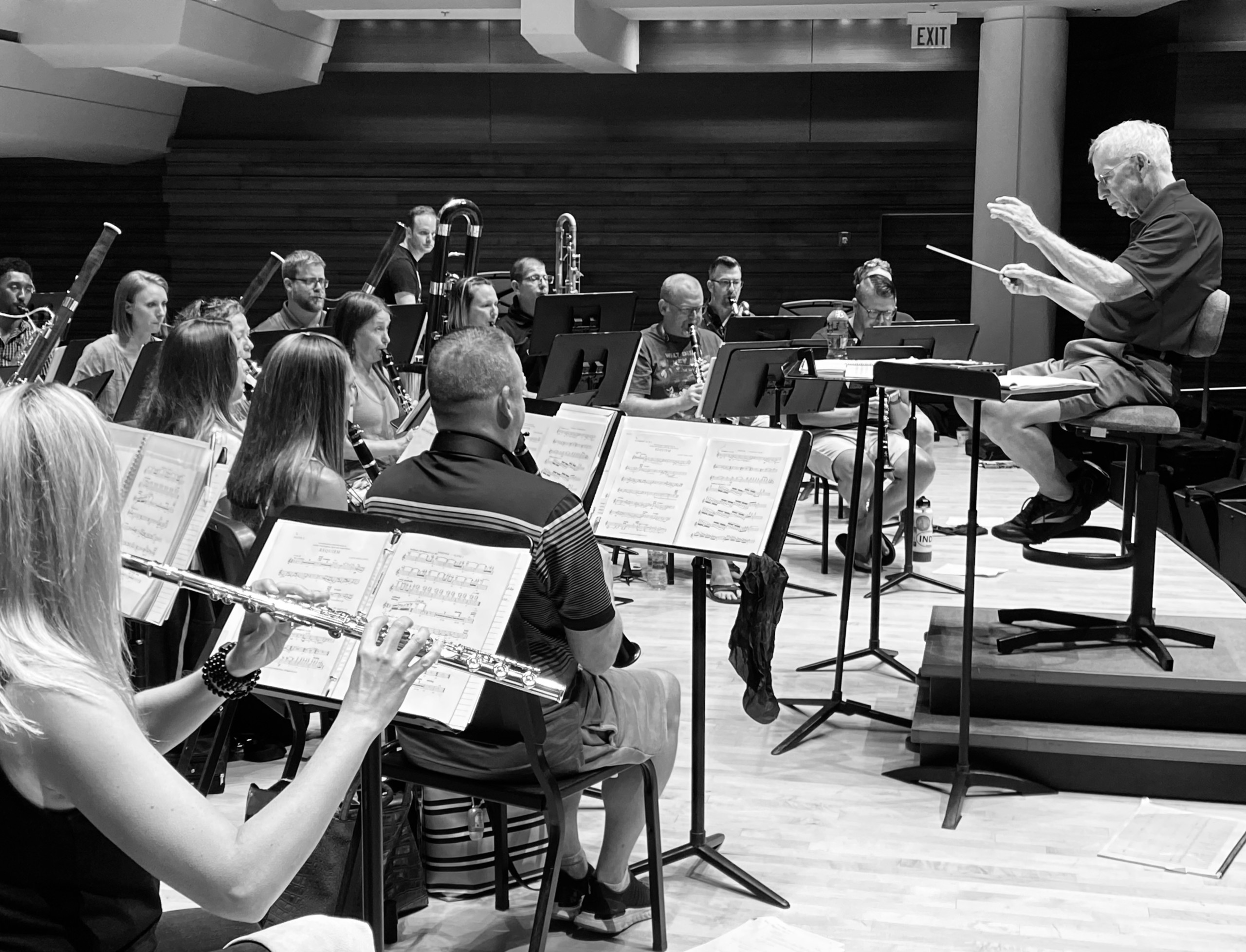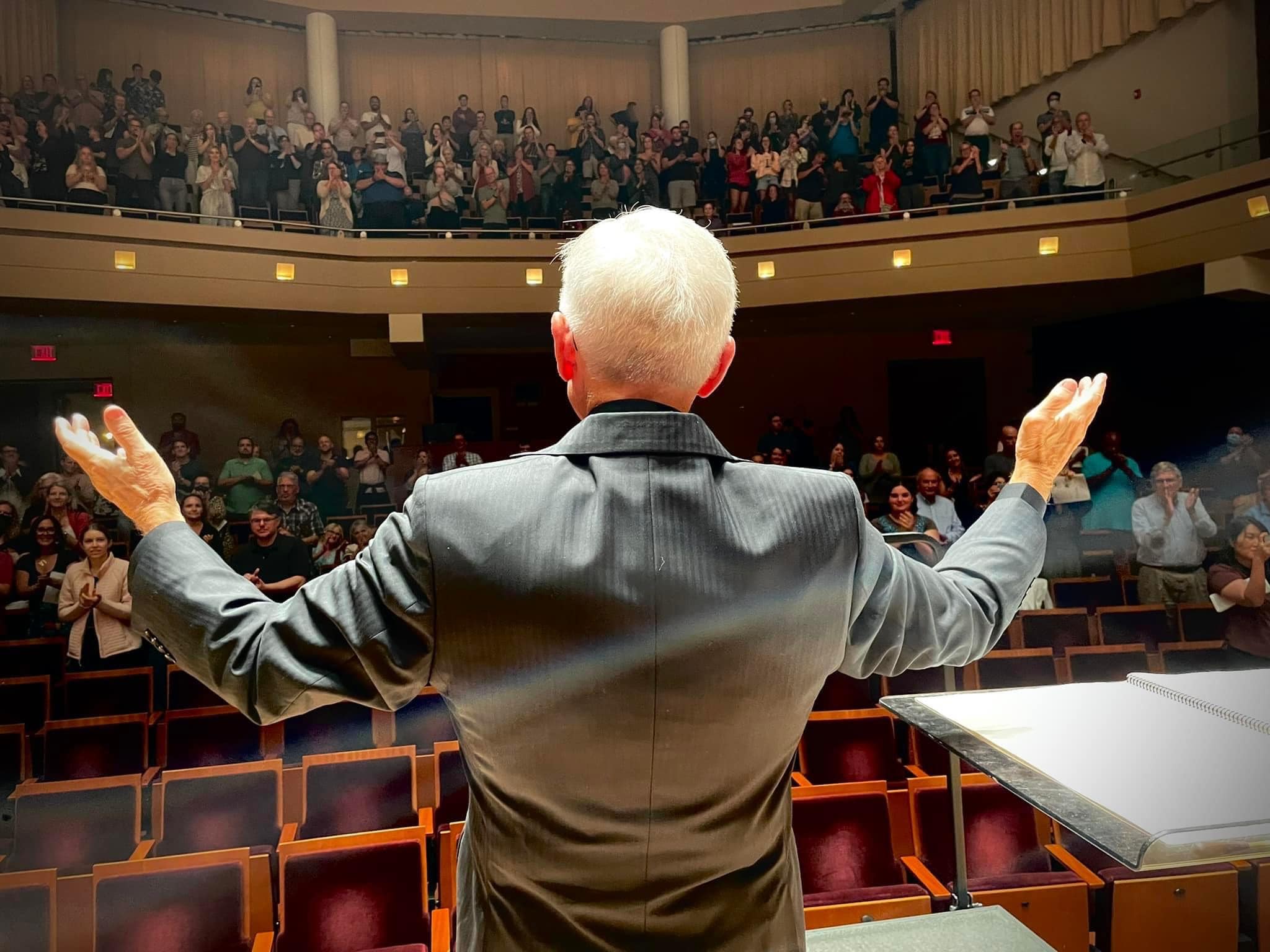Maslanka Weekly highlights excellent performances of David Maslanka’s music from around the web.
David Maslanka was a man of ideas and philosophy. He loved working with people and was always interested on the impact musical tones had on individuals, ensembles, or even a whole community. He also had a deep understanding of the creative process. He spent his compositional career learning how to tap into his subconscious and letting powerful musical ideas come to the surface. Finally, he had a passion for working with ensembles – large and small. His simple philosophy on the power of creating music left a lasting impression on everyone with whom he worked. Today, we take a special look at David’s philosophies on music, the creative process, and creating peace through musical tones.
We Choose To Sing
In what would be the last time he gave a public address, David spoke on the power of musical tones, saying that they were perhaps “One of the most powerful forces in the world – maybe even the most powerful.” David strongly believed that “At the core of each tone is peace.” From his program note to Hymn for World Peace he stated that, “If we want world peace, we can begin as individuals to ask for it. Music making opens hearts and creates peace in individuals and communities. This is a powerful step as musicians that we can take.” Watch below as David gives a powerful four-minute message before a performance of his Symphony No. 4 by Glen Adsit and the Hartt Wind Ensemble.
More info
- Glen Adsit
- The Hartt School of Music
- David Maslanka Foundation
- Symphony No. 4 @ davidmaslanka.com
- Hymn For World Peace @ davidmaslanka.com
The Creative Process
The following are excerpts from David Maslanka – An Introduction:
“My music has always surprised me. It seems to come out of some place deeper than my conscious mind, and to give me powerful musical feelings that I could not consciously think up. This means that I don’t and can’t pre-plan musical compositions. Pre-planning creates a box which immediately limits what the full expression of the music might be.”
“I am interested primarily in trying to write a good melody, and then to find the sense of continuous line and power through a whole piece. I am my first audience and first critic. When I am writing I can feel when something doesn’t have full power, and I will work until that power is felt. Once something is right I experience what I call the ‘click of rightness.’ Once that happens I know that the thing is right, and I don’t fuss with it anymore. The ‘click of rightness’ applies to everything from single moments to whole movements to whole pieces.”
Watch below as David shares his thoughts on the creative process.
More info
On Matters of Tempo and Dynamics
David’s instruction to conductors in the second movement of Give Us This Day is representative of his feelings towards the necessity of playing tempo and dynamic markings exactly as they appear in the score:
“The tempo of ♩= 184 is crucial. At a slower tempo the music is labored, and is actually harder to play. It may be necessary to work out certain passages at slower tempos, but in every rehearsal always come back to reading some portion of the music at ♩= 184. It is surprising how quickly every band grabs onto this tempo and runs with it.
From the beginning, constantly experiment with the ff dynamic to find its full value. Many conductors fear making a bad sound, but until players actually experience the piercing nature of a true fortissimo they will not understand the energy of this music, or have the ability to produce a beautiful and balanced tone at a high dynamic level. No fear!”
Watch below as David instructs a masterclass at Illinois State University on the importance of adhering to the tempo and dynamics indicated in the score.
More info
- Illinois State University
- Give Us This Day @ davidmaslanka.com
We would love to hear from you! If you know of any outstanding performances of David Maslanka’s music on the web, please email us at maslankaweekly@maslanka.org.
